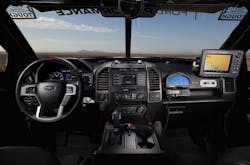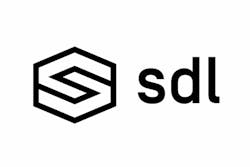A consortium forms for “open source” vehicle software
Now here’s an interesting concept: the formation of a non-profit “open source” consortium for vehicle manufacturers and “smart device” makers to work more effectively together so consumers can more easily integrate their smart phone applications apps with the cars and light trucks they drive.
Could a similar “open source” approach be good for trucking? Let’s see how this one goes first.
Ford Motor Co. and Toyota Motor Co. announced the formation of the so-called SmartDeviceLink or “SDL” Consortium at the big consumer electronics show (now known as “CES”) in Las Vegas this week.
The goal of SDL is to manage an “open source software platform” to provide consumers with more choice in how they connect and control their smartphone apps with their vehicles while on the road.
Mazda Motor Corp., PSA Group, Fuji Heavy Industries Ltd. (FHI) and Suzuki Motor Corp. are joining Ford and Toyota on the vehicle side of the consortium, with “smart device” makers Elektrobit, Luxoft, and Xevo joining as supplier members, with Harman, Panasonic, Pioneer and QNX on deck with “letters of intent” to join this new group.
SDL technology is based on Ford’s contribution of its AppLink software to the open source community in 2013; software that is currently available on more than 5 million vehicles globally.
The OEMs added that Livio will manage the open source project and provide guidance to the SDL Consortium and its members.
Doug VanDagens, global director for the Ford Connected Vehicle and Services division, said in a statement that adopting an “open source “platform gives automakers and suppliers a “uniform standard “with which to integrate apps.
“Developers benefit because they can focus on creating the best experience for customers by integrating one linking solution for use by all participating automakers,” he explained. “Consumers will win with new, innovative app experiences from increased collaboration and developer engagement.”
“Connectivity between smart phones and the vehicle interface is one of the most important connected services,” added Shigeki Tomoyama, president of Toyota’s Connected Company. “Consumers also benefit because developers and automakers working together will contribute improvements to the open source code – increasing the quality and security of the software.”
He added that Toyota plans to commercialize a telematics system using SDL around 2018.
If this all works as planned, something similar may form for trucking. We’ll see how that plays out.

